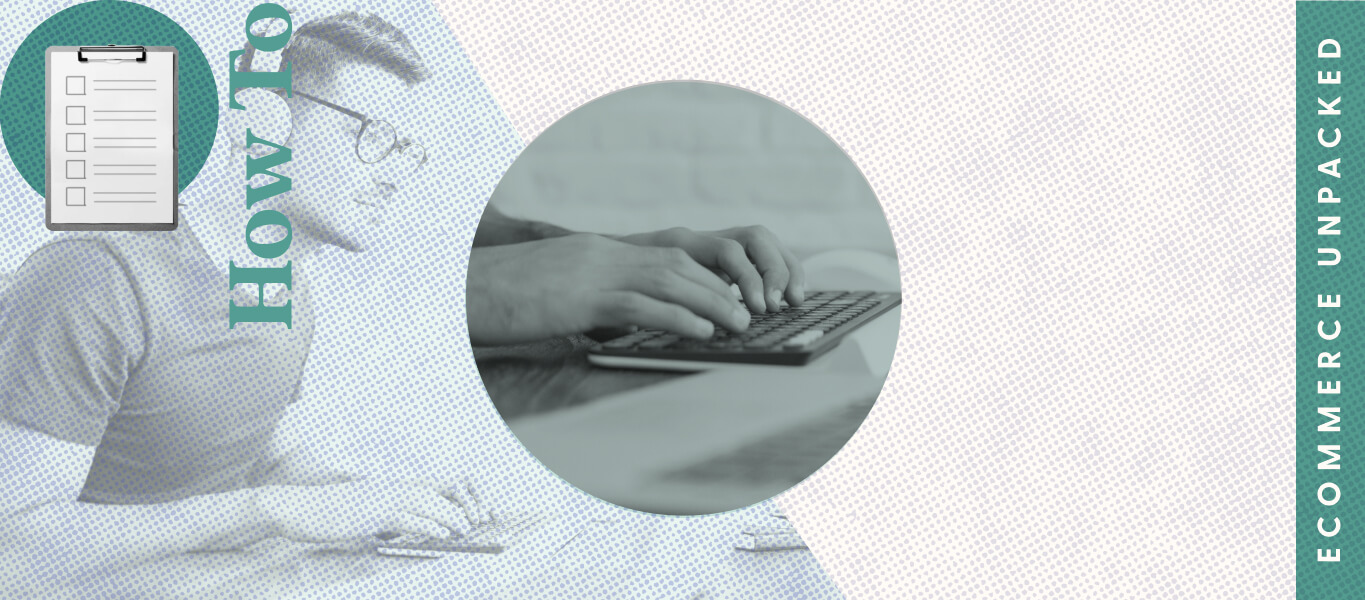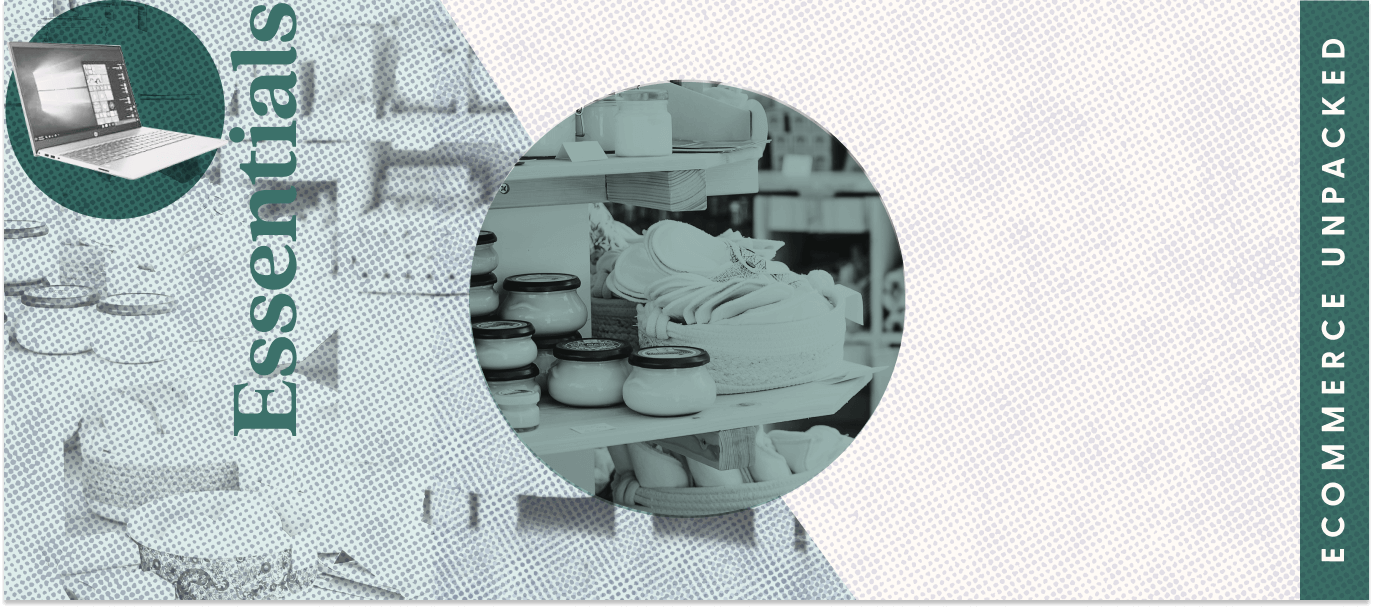Ecommerce is booming, accounting for 20% of retail sales globally. It’s a competitive market to enter—which is why it’s so important to choose the right ecommerce business idea for your brand, products, and unique customer base.
Curious about the different types of successful ecommerce businesses? We’ve got ideas to get you started across a variety of product verticals—plus best practices to help you find success along the way.
Key takeaways
- Ecommerce comprised almost 20% of retail sales worldwide in 2021.
- Beauty and makeup products remain extremely profitable.
- Demand for online educational courses is relatively high, making them worth considering as an ecommerce business idea.
Winning ecommerce business ideas to consider
1. Beauty & makeup products
Today, many people are splurging on beauty products, which account for 11% of total ecommerce sales. This product vertical doesn’t just include makeup—it also involves skincare products, which are in high demand with today’s health-conscious consumer base.
There are a variety of reasons as to why consumers are willing to spend money on cosmetic items. The first several months of the pandemic saw a decline in sales due to store closures. This caused many brands to shift their approach by offering in-demand products such as sanitizers, makeup cleansers, and hair care products, for online sale. Some even began selling home pampering packages with face masks, hair treatments, and other beauty products online.
As pandemic restrictions have eased, more and more people are now attending in-person events, returning to their offices, and attending face-to-face meetings. All of these factors in turn have continued to drive demand for this vertical.
Niched beauty products are also gaining popularity thanks to social media and beauty apps. These platforms are encouraging budding entrepreneurs to start online businesses that cater to wider audiences. Amazon data shows that DIY beauty and self-care products, like hair care, men’s grooming care, and skincare, are trending.
Image Source: McKinsey
According to a Kantar survey, 62% of women chose to grow their hair in 2021, correlating to increased sales of certain hair care products.
2. Fitness products & programs
One of the most profitable business areas to explore is fitness products and programs. The online global fitness market is expected to grow to $16.15 billion this year, and to almost $80 billion by 2026.
Leveraging this trend, many physical fitness trainers today have even transformed themselves into influencers, attracting large followings on YouTube and social media platforms like Instagram and TikTok.
Some of these influencers and bloggers have developed fitness apps. While personalities with large numbers of passionate followers can drive sales, it’s often best to start by selling items they already promote that are relevant to their target audience, such as:
- Gym clothes
- Fitness equipment
- Fitness supplements
- Smartwatches
3. Smart home products
Today, the demand for smart home products is more prevalent than ever, with the global smart home market estimated to hit $205.61 billion by 2026.
As a new business owner, this product niche can be a profitable venture, but it’s also a challenging market to enter. Consumers are always on the lookout for new and innovative smart home products. Research found that 78% of home buyers are willing to pay more to live in a house with smart technology.
A few smart home products that have particularly gained popularity are keyless locks, voice-activated assistants, and robot vacuum cleaners.
4. Online educational courses
While massive open online courses (MOOCs) have been around for years, they became mainstream during the pandemic. During this time, people started to explore different ways to spend their time while cooped up at home.
These online courses are accessible for remote users, cheaper than courses at many traditional institutions, and flexible due to their self-paced nature. They don’t require intense commitment from learners, especially those who are also working from home. Subject matter experts in in-demand areas may find offering online courses can be a profitable venture.
Some courses that can be offered online include search engine optimization (SEO), affiliate marketing, dropshipping, graphic design, and email marketing. The key to making this endeavor work is identifying the online courses that answer the growing issue of the industry skills gap.
5. Pet food & products
By 2029, the pet food industry is expected to reach $163.70 billion. The pandemic may very well have played a role in this unprecedented growth—as people stayed home more, many adopted pets, and breeders and rescue centers reported an increase in inquiries.
Image Source: Statista
In the US, 20% of pet owners admit to spending $500 on pet food and treats annually. This growth in the market translates to business opportunities for ecommerce sellers.
Aside from selling the usual organic pet food, sellers can explore pet accessories like pet toys, cushion beds, training hoops, pet clothing, and pet supplements.
6. Eco-friendly clothes & products
Increased awareness today around sustainability and climate change is spurring greater demand for environmentally-friendly products. As a result, many people now prefer adopting a more practical and sustainable lifestyle, and want to support businesses committed to providing and developing eco-friendly products.
A survey found that 65% of consumers believe brands are as responsible as governments for promoting positive environmental changes. Most consumers will still factor in cost and quality when purchasing items. However, many are now also paying close attention to a product’s environmental impact.
What eco-friendly products can you sell online? Here are some to consider:
- Eco-friendly t-shirts: Some manufacturers and designers have created T-shirts using natural plant fibers to create breathable and unique clothing.
- Reusable makeup removers: The production of one kilogram of cotton alone uses 10,000 liters of water. While cotton pads aren’t biodegradable, a more eco-friendly alternative could be reusable makeup removers made of bamboo, muslin, or flannel.
- Biodegradable kitchen items: Most items used in households have a limited lifespan. Kitchen sponges must be disposed of since they can become breeding grounds for bacteria, while most scrubbing pads are made of foam plastics and end up in landfills. Some materials for eco-friendly alternatives could include coconut fibers, loofah, bamboo, and jute.
7. Jewelry products
The global jewelry market is estimated to hit $518.90 billion by 2030, according to a report by Grand View Research. According to their report, rings are the most popular type of jewelry product that attracts buyers, and consumers prefer items with intricate designs that can be used as statement pieces.
Customized jewelry items are also popular among collectors. In terms of material, gold has the fastest market growth, with jewelry manufacturers using more than 1,400 metric tons of gold.
To succeed in the ecommerce jewelry business, consider investing in online marketing to spread awareness about your products. Leveraging the power of social media marketing can help generate interest in your brand, while search engine research can help you get an idea of what your target audience is looking for.
8. Video games
During the pandemic, many people found an escape in playing video games and mobile games. Market research shows that the gaming industry is still growing: According to the PwC outlook report, the global gaming market is projected to be worth $321 billion within the next 4 years.
Image Source: PwC
Global consumer spending on video games decreased during Q1 of 2022 due to inflation rates and return-to-office orders. But penetrating the market can still have lasting benefits among the category’s large and loyal consumer following, which contains both beginners and long-time fans.
9. Subscription boxes
Unlike one-time purchases, subscription boxes are recurring in nature, meaning orders repeat on a set timeline that is chosen by the customer. This offloads the mental burden of having to remember to reorder the same products again and again, and prevents customers from having to run back to the store to pick up heavy or frequently-used items..
Subscription boxes can run the gamut of products, from specialty items that are curated around a certain theme to replenishable items that are used regularly. They can come in all product verticals, and can even include digital elements, like access to gated content.
The subscription industry continues to gain popularity for the convenience and value it affords customers. Subscription boxes can be created for a variety of product verticals, including:
- Beauty products: Beauty product subscriptions can take a variety of different forms, from the same essential skincare items delivered on a recurring basis to curated boxes of specialty or premium items.
- Books: For some readers, it can be hard to keep track of books that are worth reading. Subscription boxes for books allow readers to discover new authors and titles from a brand they trust.
- Pet supplies: These products can often be heavy and cumbersome to carry—think bags of dog food or cat litter. With pet subscription boxes, these items can show up on the customer’s door without requiring a trip to the store. They can even take the form of curated boxes of treats, toys, and training tools to surprise and delight pet owners.
- Health supplements: Providing consumers with an assortment of expert-curated health supplements ensures they no longer have to worry about planning this task themselves.
Looking to get started with subscriptions for your ecommerce business? Use our new, interactive guide to check off the first step: choosing the right subscription software for your brand.
Tips for starting an ecommerce business
Highlight your unique value
To stand out against the competition, it’s important to highlight the unique value that your brand can offer potential customers. Whether this is financial value (like a discount), value in terms of quality (like a product that is built to last over time), or value in terms of your brand’s priorities (like a cause you donate to with every purchase), highlight this unique factor to your target audience. Be sure to weave your communication about this value into multiple channels, from your social media posts to your website copy.
Nurture repeat customers
Often, ecommerce businesses prioritize attracting new customers over retaining their existing ones—but while customer acquisition is important, it’s also expensive. Meanwhile, the customers who have returned to your brand multiple times have proven their interest in your products or services, making them highly valuable to your business. Make sure to focus on areas that these customers care about, soliciting their feedback and honing your approach depending on their priorities to help them stick with you over time.
Develop an omnichannel marketing strategy
Don’t just rely on a single marketing channel when promoting your online store. Explore the channels and touchpoints where your target audience is the most active, then meet them there.
To create an effective digital marketing strategy that grows and scales your ecommerce store, hone in on your omnichannel strategy. In other words, ensure your customer experience is smooth and intuitive across a variety of channels and device types. For example, make sure your website is easy to browse from a mobile device, mobile app, or web browser, and synchronize shopping carts on all devices so customers can easily purchase the items they want from you.
Invest in influencer marketing
In 2021 alone, influencer marketing grew to $13.8 billion, with businesses enjoying a return on investment (ROI) of $5.78 for every dollar spent. This form of marketing uses trusted, relatable individuals to bring awareness and trust to certain brands, and can help increase conversions and brand loyalty when matched with the right products and services.
Integrate social commerce
Social commerce is leveraging social media platforms to sell and advertise your products. More and more, ecommerce business owners are utilizing this approach: A benchmarking report by Influencer Marketing Hub shows that social commerce will equate to 17% of all ecommerce sales by 2025.
Most social media channels, like Instagram and TikTok, have integrated shopping options today. This allows sellers to include a “shop” button on their posts, which directs customers to a dedicated landing page where they can make purchases.
According to a survey conducted by Meta, 83% of consumers discover products via Instagram. Similarly, by year’s end, TikTok is projected to have 1.5 billion users. This vast audience can prove to be highly valuable when businesses are able to reach it effectively.
Consider a subscription-based business model for ecommerce success
Launching a successful ecommerce business requires hours of market research and careful consideration and planning. However, by identifying key consumer needs, solving for them with your products and services, and communicating thoughtfully with your target audience, you can lay the groundwork for a scalable ecommerce business that will attract a group of loyal customers.
Interested in subscription-specific ideas for your ecommerce brand? Learn more about the benefits of the business model and explore the different options you can offer to your customers.
FAQs for ecommerce business ideas
What are the most important things to prepare before starting an ecommerce business?
To launch an ecommerce business, start with thorough market research to identify gaps in the market to fill specific consumer needs.
After identifying a market need, you must also validate your product idea. Will you be able to produce or source the products as frequently as necessary? How will you manage your inventory?
It’s also essential to choose an ecommerce platform that allows the tech integrations your business model requires.
What are the different types of ecommerce?
There are three main types of ecommerce business models:
- Business-to-business (B2B): Here, businesses sell products or services to other businesses.. This category includes software as a service (SaaS companies).
- Business-to-consumer (B2C): This type of ecommerce involves businesses selling directly to their customers..
- Consumer-to-consumer (C2C): In this type of ecommerce, consumers sell to each other—thinkeBay and Facebook Marketplace.
What are the benefits of launching an ecommerce business?
Setting up an ecommerce business has several advantages compared to traditional brick-and-mortar stores. Unlike physical stores, an ecommerce store’s store reach isn’t limited to a particular area, and can even reach a global audience..Sellers aren’t required to maintain a physical storefront or pay the overhead costs associated with this, such as rent and in-person staff. Because ecommerce stores function online, these businesses can quickly adapt and respond to market demand, and seamlessly market their products to an online audience through social media and other channels.



